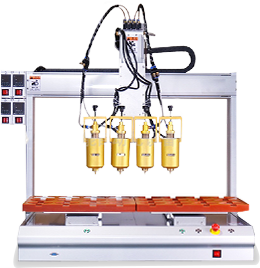

As an optical precision part, the black metal base is made of aviation-grade aluminum alloy and hard anodized black. The overall structure is a square flat plate with a high-precision circular positioning cavity integrated in the center and standardized mounting holes distributed around it. It is designed for optical equipment (such as microscope stage base, laser interferometer support base, spectrometer base plate). Through precise geometric tolerance control and low-stress processing technology, it provides an ultra-stable physical support platform for the optical system, which can effectively suppress deformation caused by external vibration and temperature difference, and ensure the assembly accuracy of optical components and the stability of optical path transmission. It is a core basic component of high-end optical instruments.
The structure is optimized through finite element analysis, the thickness gradient of the base and the layout of the ribs are reasonable, vibration aging is used to eliminate residual stress during processing (residual stress <50MPa), and the thermal deformation of the equipment during operation is <0.002mm/℃, which is suitable for high and low temperature optical experimental environments.
Features | Parameters |
Processing accuracy | Flatness <0.005mm, coaxiality ±0.003mm |
Material properties | Tensile strength 310MPa, elastic modulus 70GPa, non-magnetic |
Stress control | Residual stress <50MPa, thermal deformation <0.002mm/℃ |
III. Product Details
In the production process, 6061-T6 aluminum alloy bars are selected, and after 12 processes such as sawing, rough milling, stress relief, fine milling, and anodizing, laser interferometers are used to detect flatness in each step, and three-coordinate measuring instruments are used to calibrate hole position accuracy.
The finished product is used in semiconductor lithography equipment, carrying the objective lens system to achieve nanometer-level graphic transfer; with a laser tracker, it is used as a reference seat to ensure the accuracy of spatial coordinate measurement; in astronomical telescopes, it stably supports the secondary mirror group and eliminates the optical path deviation caused by thermal expansion and contraction. From wafer manufacturing to deep space exploration, it has become the "invisible cornerstone" of optical precision equipment with ultra-precision, high stability, and low stress characteristics, making the path of each beam of light precisely controllable.
 Headquarters tel.
Headquarters tel. E-mail.
E-mail.